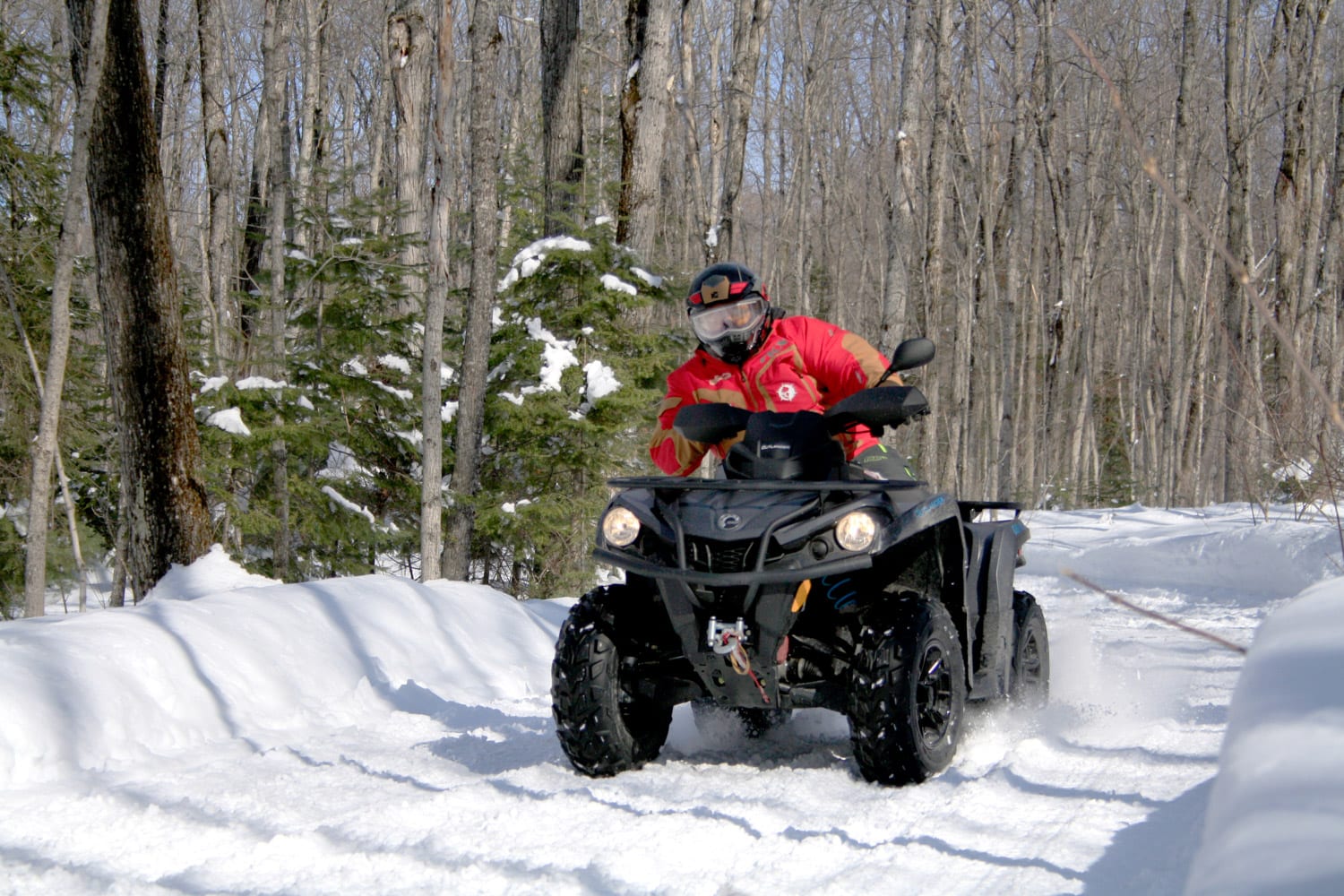Although side-by-sides have become more and more popular, there are still buyers looking for an ATV that is fun to use and offers good value for the money. The Can-Am Outlander 570 and 450 cater fit this bill nicely. These entry-level ATVs have a little less of Can-Am’s state-of-the-art technology in order to make the price a whole lot nicer to your wallet. The biggest challenge is to offer a vehicle that does not look like a cheap or poorly built machine. Trust us, this is not a problem for Can-Am.
Wanting to establish a strong presence in this niche, Can Am has added models to its entry-level models and does so by bringing out new specific usage needs. Things like more premium looking machines with the XT models (the one tested in this text), an extreme mud X MR and a Hunter model, which is optimized for hunting. There are two-seat MAX versions available and they recently added to the family with the Outlander 570 6X6, which is a real workhorse.
We will focus on the XT 570 version, which comes with a two-cylinder engine. The ATV comes with power steering, standard performance Carlisle ACT tires on black aluminum rims, front and rear bumpers, handguards on the handlebars and a factory-installed winch.
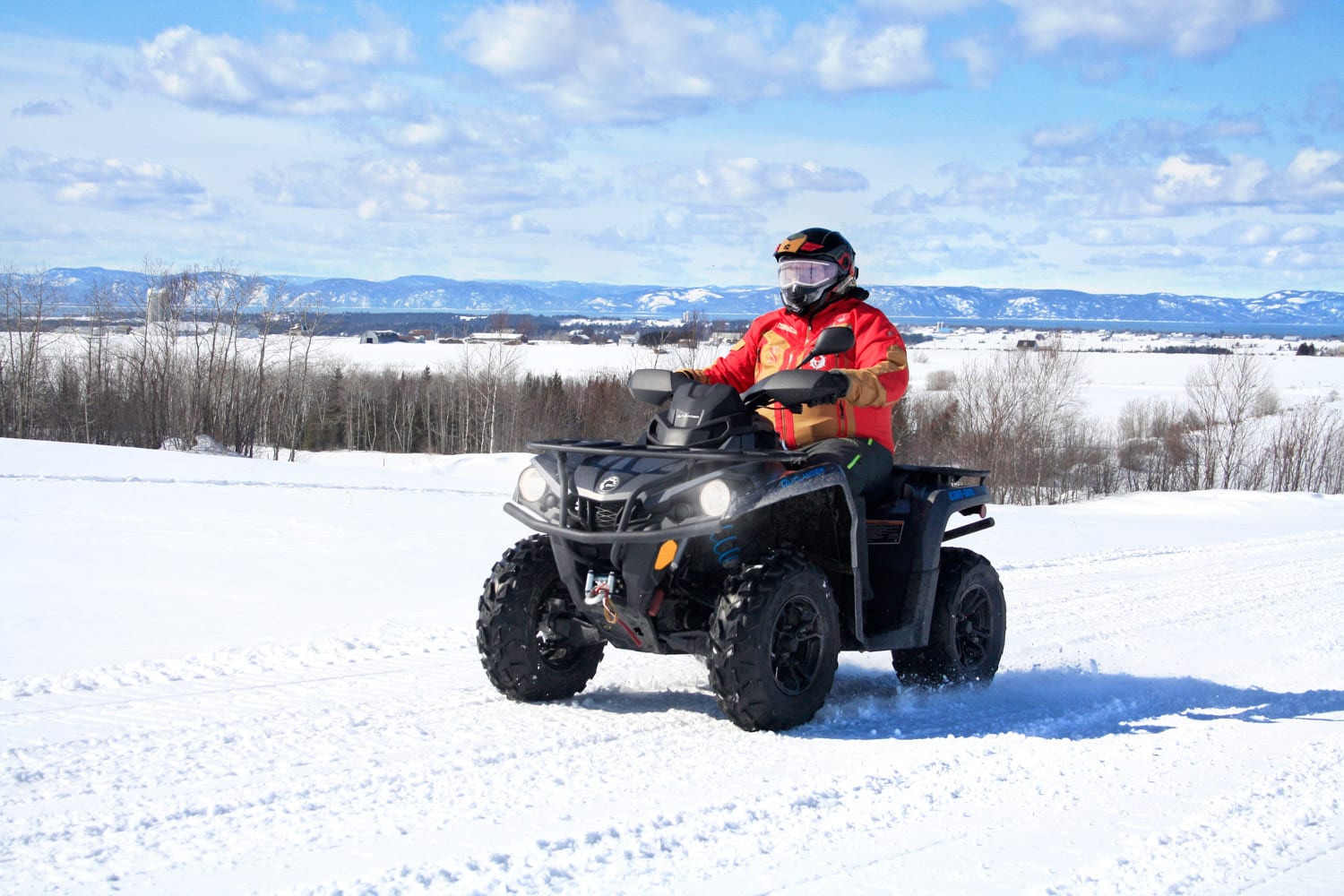
Body and finish
Considering that the Outlander 570 remains an entry-level machine, we can see that the body styling is not as spectacular as the upper-range Outlander models. For example, its big brother Outlander has dual headlights that take advantage of the projector technology, while the 570 tested has a single halogen headlight on each side with 35 watts of power each. While the standard machines have a molded plastic body finish, the XT version is painted and adds a nice touch to the ATV. The steel gray color, enhanced with touches of blue in the decal and on the suspension springs gives the XT a sweet, quality looking appearance.
The wide fenders offer very good protection against splashes. No water or mud from the wheels will splash on the driver’s feet. The full-length running boards have non-slip footrests that will give you solid support and grip to keep your feet planted right where you want them.
In terms of storage and transport capacity, there are no complaints there. The luggage racks are made of steel, but the powder coat paint is very good and, moreover, compatibility with the Linq quick coupler system has been retained. That’s excellent news. In short, the general design demonstrates a concern to limit costs, but has efficiency been sacrificed? Not that we could tell. The ATV is equipped, in addition to a front luggage rack, with a second rack of good size at the rear. Plus, Can Am had the good idea to include a 10.9 L waterproof plastic box on it.
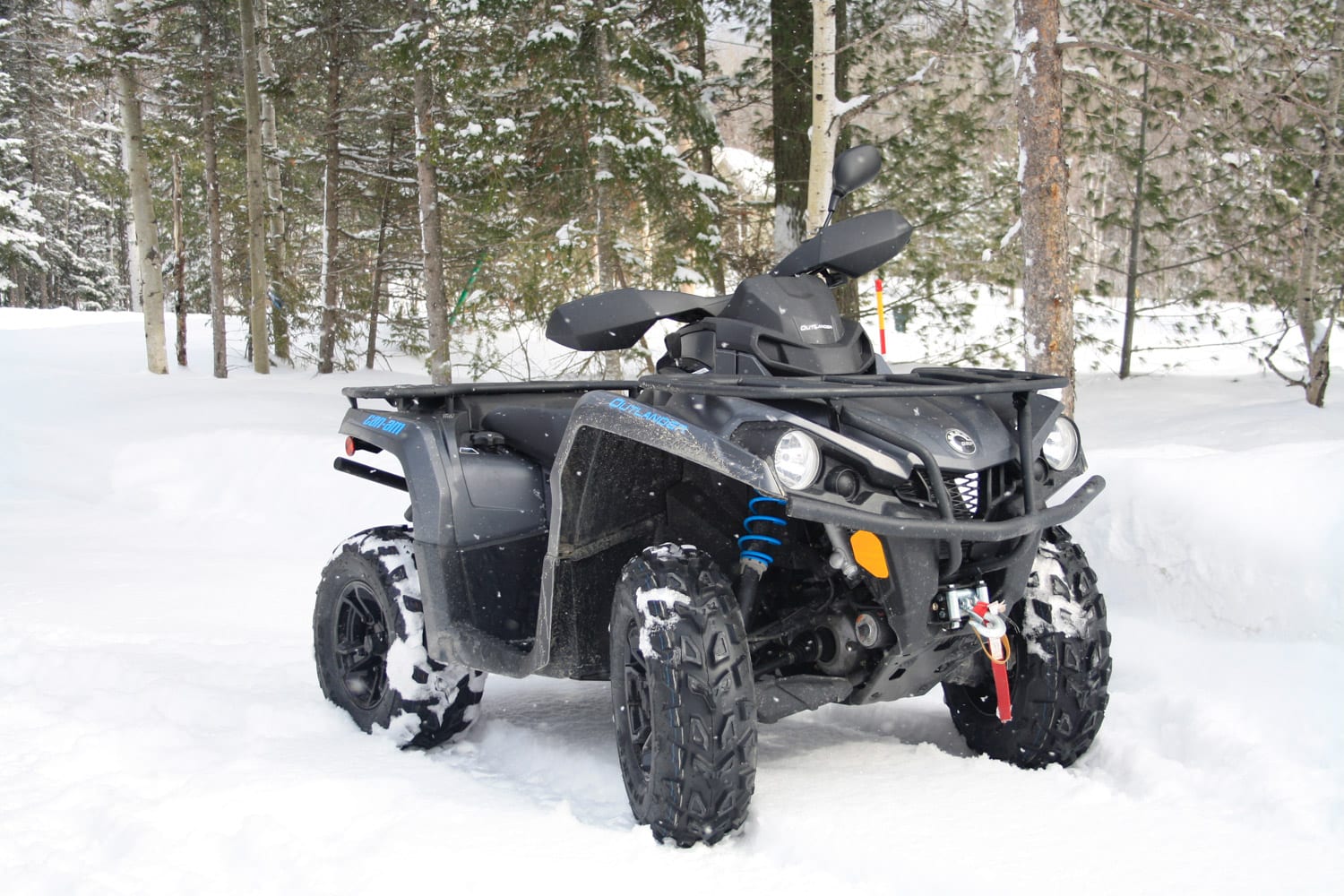
Ergonomics, instrumentation, and lighting
Riding on the Outlander 570, the ride position is high and straight and can be suitable for both small and tall riders. There is ample space for the pilot to move sideways to make pronounced weight transfers.
The digital instrumentation consists of a small liquid crystal display which is backlit in an amber color. It is borrowed directly from the Can-Am Renegade and is placed on the front cover in a slightly raised basket. The information it provides is surprising for such a small indicator: speed, odometer, fuel gauge, traction mode, and gear ratio engaged. A series of warning lights will inform of other parameters such as high beam, high temperature, low fuel level, etc.
The halogen type of lighting has a power of 35W per headlight. Contrary to what we feared, their efficiency is very good for the type of light. Also, there is no shadow area in the light beam from the headlights. While we’re starting to get used to LED projector lights on machines, we were not let down by the XT’s lighting in any way.
Handling and power
The Outlander 570 XT has a strong argument that other competitors in this category do not have: a twin-cylinder engine. The Rotax V2, still powered by a Siemens electronic fuel injection system, has been revised since its introduction and has seen its displacement go from 500 to 570 cc, bringing its power to 48 hp. It develops only 4 additional horses despite an increase in displacement of 13-percent, but the manufacturer claims to have reworked the curve of engine torque at low revs, which has increased by 9-percent.
Riding the XT, we feel the vehicle is more lively than the big Japanese single cylinders. The low-speed torque deficit has been reduced and the vehicle has good recovery at low speed. However, this engine still likes to express itself at high RPM. We always felt it performs better in its favorite speed range which is between 40 and 75 km/h. In this range, the ATV is very fun to ride. The power is delivered smoothly and you feel confident riding it to its limits.
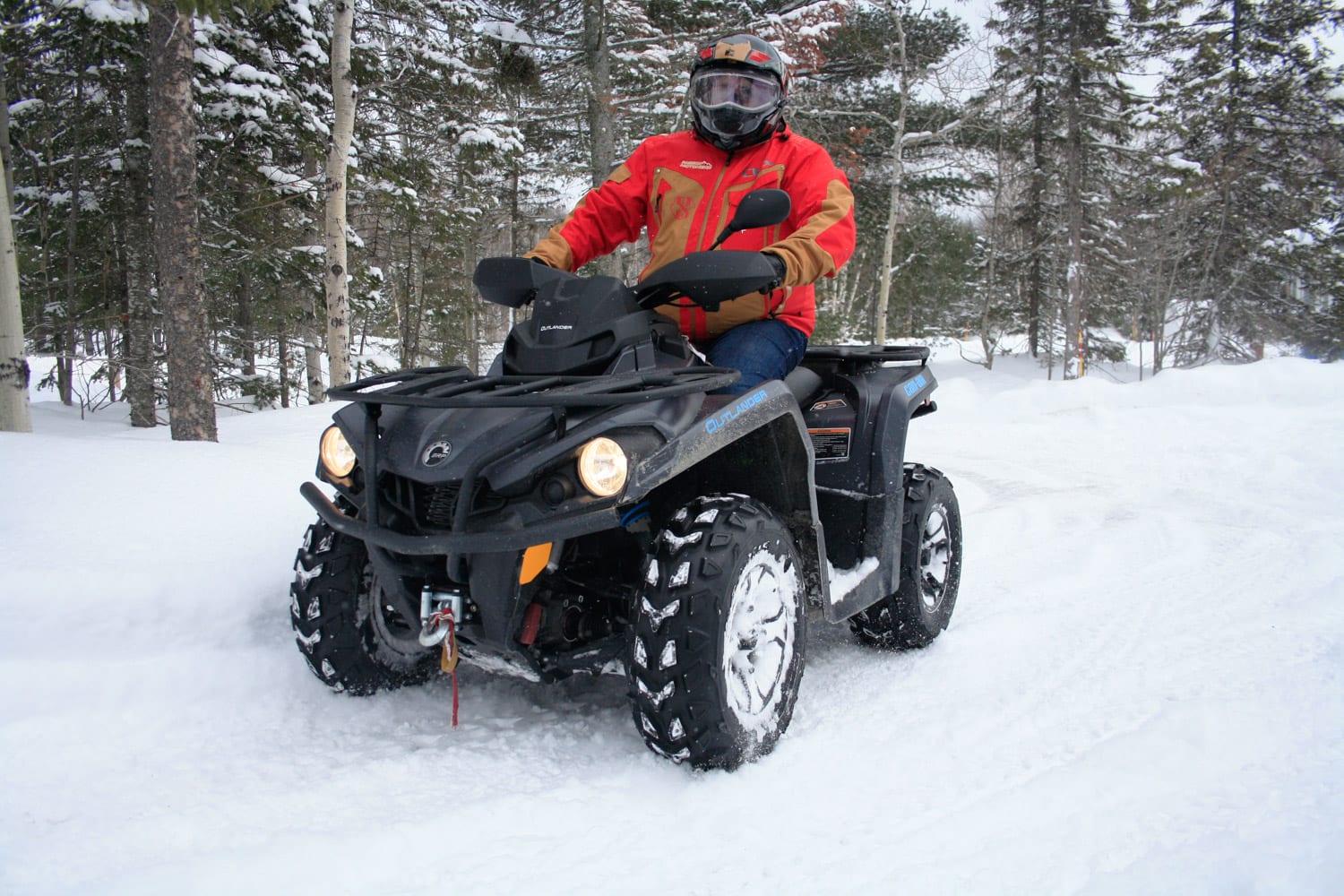
Power is transmitted to the wheels via an automatic CVT-type transmission. Its calibration is adequate and always gives the right ratio to allow optimal engine performance. In tests done in the past, we noticed a loud high pitch hiss that was very annoying and made riding it rather painful. This year, nada. The problem never appeared with the XT 570. The engine-brake effect is present in an average way and is less intrusive than in the bigger displacements from this brand.
The Outlander’s suspension is independent on all four wheels, which contributes to the machine’s decent ride comfort. The front suspension is of the double wishbone type, providing 22.9 cm (9-in) of travel. The independent rear suspension is a TTI trailing arm type, a principle cherished by Can-Am.
During our tests, we realized that the suspension of the Outlander 570 is stiffer than that of the regular Outlander family (650cc and more). The suspension is more bouncy in the bumps, but has no unexpected rebound that will surprise the driver. The rider who likes soft “Buick” suspensions will leave the adjustments on the softer setting, or will want to look at the big Outlanders whose suspension comfort far more plush. Despite everything, the overall performance of the suspension on the XT 570 is still remarkable, especially for the price point this machine hits.
We rode the Outlander 570 during the summer season. We noticed that on fast forest trails, its behavior and handling have a pleasant sporty aspect, which gives the impression of riding a Renegade 570. The power steering does not transmit any shaking or shocks from the terrain conditions. In cruise mode, the ATV does not wobble and demonstrates a strong stabile character much like a train on its rails. Braking power is no problem and stops the ATV momentum with authority. The vehicle’s nose-diving is very well controlled and the ATV brakes in a straight line.
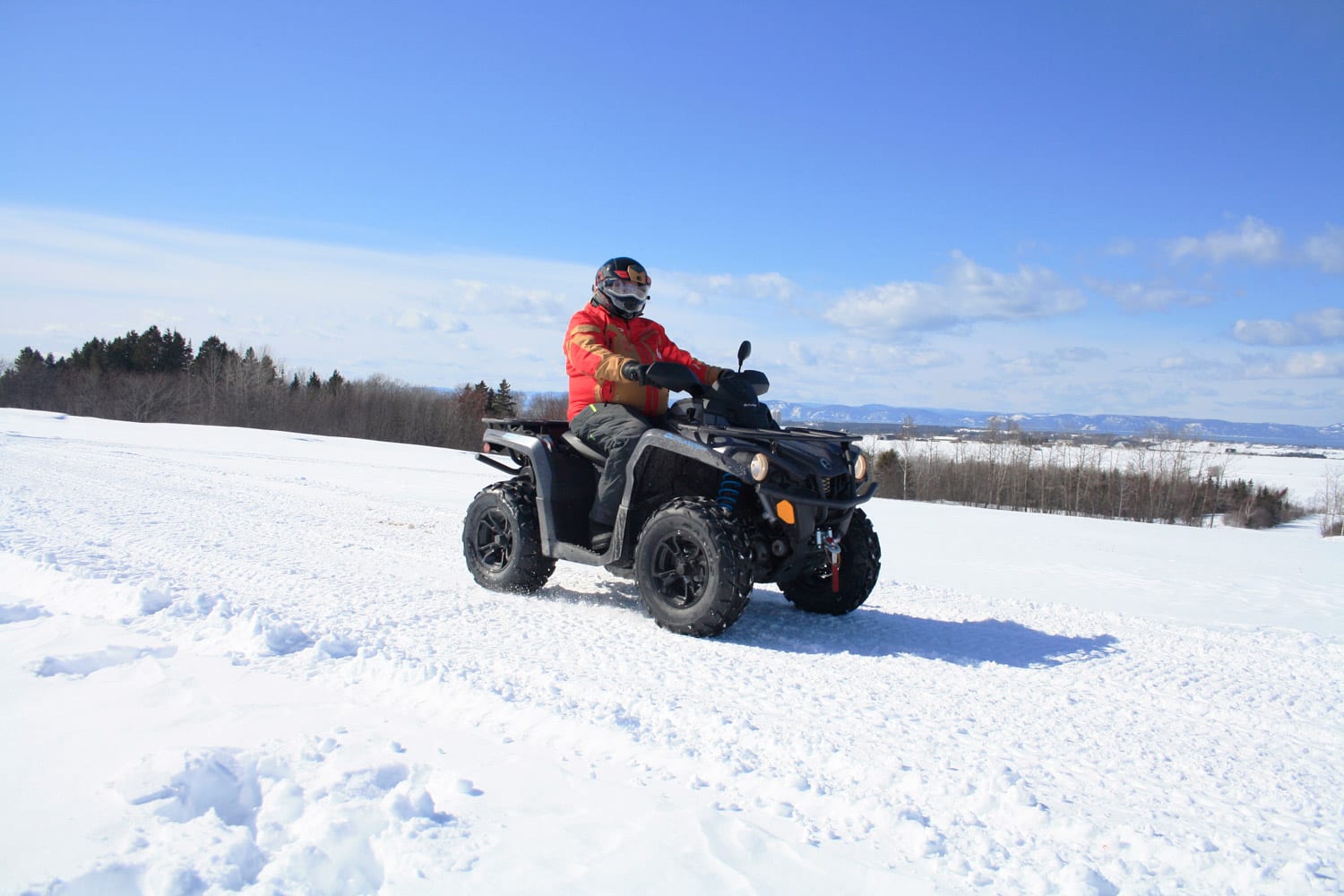
Also, as part of this test, we drove the vehicle in winter conditions where it showed quite good manners. The vehicle offers good directional stability on slippery surfaces and excellent traction that has proven itself on many occasions, thanks in particular to the Visco-Lock front differential. This device locks the front differential as soon as it detects a loss of traction from one wheel to transmit power to the other and thus have locked traction on all four wheels to obtain maximum traction. When things get tough, like in snowdrifts where the ATV is driven deep in the snow, the engine has the torque it needs to spin the wheels. In short, it is a pleasant vehicle to use on Canada’s white carpet. The only concern we had was that the tires have too soft of sidewalls. When you follow the trail ruts, the ATV will waddle from left to right until the driver is jerked around on the seat. It’s a common problem with economy tires, and you just need to install sturdy tires to get rid of this problem.
Although the Outlander is a great riding machine, it is also tough for work. The luggage racks can support 120 pounds (55 kg) in front and 240 pounds (110 kg) in the back. It also offers a very respectable towing capacity of 1300 lbs. (590 kg).
Conclusion
We were definitely happy with Can-Am’s XT 570. The engine update gave this vehicle the power it lacked at low revs. The fun, lively and playful nature of this machine makes it a pleasant vehicle to ride days on end. The good winter-riding ability of the Outlander 570 confirm that this model have increased. Can-Am has built a machine that rides like a top-level machine, but with an entry-level price tag.
One last word: With the Outlander 450/570 range, care must be taken when selecting the most equipped versions, as their final price will go up quickly. The Outlander 570 XT is not really a bargain at the suggested retail price of $11,600. If you look at this model, maybe you should also have a look at the big Outlander 650 XT, which has an equivalent level of equipment. For a small $1,200 extra, you’ll get 17 more HP, better suspension, a more comfortable riding position, better lighting, and excellent 26-inch Terracross tires. Which route you go is up to you.


